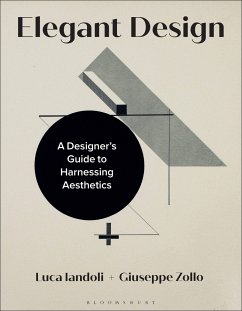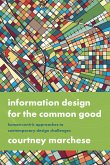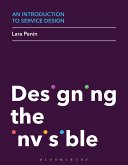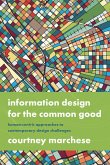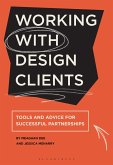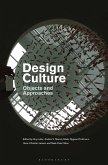Luca Iandoli (USA St. John's University), Giuseppe Zollo (Italy University of Naples Federico II)
Elegant Design
A Designer's Guide to Harnessing Aesthetics
Luca Iandoli (USA St. John's University), Giuseppe Zollo (Italy University of Naples Federico II)
Elegant Design
A Designer's Guide to Harnessing Aesthetics
- Broschiertes Buch
- Merkliste
- Auf die Merkliste
- Bewerten Bewerten
- Teilen
- Produkt teilen
- Produkterinnerung
- Produkterinnerung
"Analyzing the work of great artists and designers, with the help of psychology, Elegant Design identifies actionable aesthetic strategies to achieve effective design. It shows how to use these strategies to create visual formats that maximize meaning while using minimum information: the outcome is effective complexity. With case studies in design that successfully navigate complexity and simplicity, such as Nest, and with a variety of exercises at the end of each chapter to train your brain to use aesthetics in this way, this book will be your guide to develop a swinging mind: one that may…mehr
Andere Kunden interessierten sich auch für
![Information Design for the Common Good Information Design for the Common Good]() Courtney Marchese (USA Quinnipiac University)Information Design for the Common Good97,99 €
Courtney Marchese (USA Quinnipiac University)Information Design for the Common Good97,99 €![An Introduction to Service Design An Introduction to Service Design]() Lara Penin (USA Parsons School of Design)An Introduction to Service Design52,99 €
Lara Penin (USA Parsons School of Design)An Introduction to Service Design52,99 €![Information Design for the Common Good Information Design for the Common Good]() Courtney Marchese (USA Quinnipiac University)Information Design for the Common Good33,99 €
Courtney Marchese (USA Quinnipiac University)Information Design for the Common Good33,99 €![Working with Design Clients Working with Design Clients]() Jessica Meharry (Institute of Design, Illinois Tech, USA)Working with Design Clients30,99 €
Jessica Meharry (Institute of Design, Illinois Tech, USA)Working with Design Clients30,99 €![Design Culture Design Culture]() Design Culture36,99 €
Design Culture36,99 €![The Graphic Design Process The Graphic Design Process]() Anitra NottinghamThe Graphic Design Process33,99 €
Anitra NottinghamThe Graphic Design Process33,99 €![Information Design Unbound Information Design Unbound]() Dr Sheila Pontis (USA Princeton University)Information Design Unbound44,99 €
Dr Sheila Pontis (USA Princeton University)Information Design Unbound44,99 €-
-
-
"Analyzing the work of great artists and designers, with the help of psychology, Elegant Design identifies actionable aesthetic strategies to achieve effective design. It shows how to use these strategies to create visual formats that maximize meaning while using minimum information: the outcome is effective complexity. With case studies in design that successfully navigate complexity and simplicity, such as Nest, and with a variety of exercises at the end of each chapter to train your brain to use aesthetics in this way, this book will be your guide to develop a swinging mind: one that may swing from order and disorder, details and context, equilibrium and disruption, and familiarity and novelty. It will teach you how to create design that is as simple as possible - but not simpler"--
Produktdetails
- Produktdetails
- Verlag: Bloomsbury Publishing PLC
- Seitenzahl: 200
- Erscheinungstermin: 24. Mai 2022
- Englisch
- Abmessung: 265mm x 211mm x 15mm
- Gewicht: 682g
- ISBN-13: 9781350174269
- ISBN-10: 1350174262
- Artikelnr.: 62759877
- Herstellerkennzeichnung
- Libri GmbH
- Europaallee 1
- 36244 Bad Hersfeld
- gpsr@libri.de
- Verlag: Bloomsbury Publishing PLC
- Seitenzahl: 200
- Erscheinungstermin: 24. Mai 2022
- Englisch
- Abmessung: 265mm x 211mm x 15mm
- Gewicht: 682g
- ISBN-13: 9781350174269
- ISBN-10: 1350174262
- Artikelnr.: 62759877
- Herstellerkennzeichnung
- Libri GmbH
- Europaallee 1
- 36244 Bad Hersfeld
- gpsr@libri.de
Luca Iandoli and Giuseppe Zollo
Preface
Introduction
The age of aesthetics
Elegant decisions
The art of simplicity
Getting started
1. The Simplifying Machine
Impressions
Simple minds
What do you see is what do you get? Understanding as pattern recognition
The joy of guessing: ambiguity and emotions in understanding
The role of aesthetic pleasure in understanding
Too good to be true
Creativity Lab: how the mind simplifies reality and compresses information
2. Beauty as Effective Complexity
There is no recipe for creativity
The hidden workflow of the creative process
How does it feel? The roles of emotions in aesthetic experience
When good is good enough? Beautify as effective complexity
Strategies for effective complexity
Conclusions: the necessity of art
Creativity Lab: handling complexity in design
Part One: Search for Unity Strategies
3. Subtract Details
The art of concision
The case for abstraction
Subtracting the obvious, adding the meaningful
Small talks
The science of brevity
Conclusions
Creativity Lab: subtracting details from your design without loosing
meaningful performance
4. Symmetry
Blood, sweat, and tears: what goes up, can't go down
The invention of the point of view: symmetry in art
Managing symmetry: checks and balances
The science of symmetry
Conclusions
Creativity Lab: how to handle symmetry and asymmetry in your design
5. The Power of Grouping
A stroll down the memory lane
The power of grouping in art: seeking as creating
What is your product? The danger of cognitive inertia and the wonders of
creative categorization
The science of grouping
Conclusions
Creativity Lab: Effectively grouping information in your design
6. Split
Lizards, infinite lawns, and the invention of the hypertext
The devil is in the detail
The ergonomics of simplicity: the NEST thermostat
The science of split
Conclusions
Creativity Lab: how to design effective information layers and hierarchy
Part Two: Push for Variety Strategies
7. The Power of the Center
May the force be with you
The power of the center in art: equilibrium as dynamic tension
The power of obsession: how extreme focus can make your business thrive (or
die)
The science of split: the eye of the beholder
Conclusion
Creativity Lab: identifying attention-structuring centers in your design
8. Emphasize
An umbrella on four wheels
Emphasize in art
Think different: emphasize in design and management
The science of emphasizing
Creativity Lab: how to make your design stand out by harnessing the power
of emphasis
9. Remix
Mission Impossible
Metamorphosis or the Nature of Change
What's your story? A chairman walks into a lab
The science of remix
Conclusions
Creativity Lab: effectively reshuffling your design to search for novelty
10. Contrast and Balance
Chess and balance
Present, tense
Lost in transition
The science of contrast
Conclusions: keep on moving
Creativity Lab: How to creative effective visual weight dynamics
11. The Swinging Mind
Black holes and supernovas: navigating the design continuum
The critical role of granularity in design
When good is good enough: the swinging mind
Design as persuasion
Creativity Lab: everyday exercises to cultivate a swinging mind
Conclusion
Index
Introduction
The age of aesthetics
Elegant decisions
The art of simplicity
Getting started
1. The Simplifying Machine
Impressions
Simple minds
What do you see is what do you get? Understanding as pattern recognition
The joy of guessing: ambiguity and emotions in understanding
The role of aesthetic pleasure in understanding
Too good to be true
Creativity Lab: how the mind simplifies reality and compresses information
2. Beauty as Effective Complexity
There is no recipe for creativity
The hidden workflow of the creative process
How does it feel? The roles of emotions in aesthetic experience
When good is good enough? Beautify as effective complexity
Strategies for effective complexity
Conclusions: the necessity of art
Creativity Lab: handling complexity in design
Part One: Search for Unity Strategies
3. Subtract Details
The art of concision
The case for abstraction
Subtracting the obvious, adding the meaningful
Small talks
The science of brevity
Conclusions
Creativity Lab: subtracting details from your design without loosing
meaningful performance
4. Symmetry
Blood, sweat, and tears: what goes up, can't go down
The invention of the point of view: symmetry in art
Managing symmetry: checks and balances
The science of symmetry
Conclusions
Creativity Lab: how to handle symmetry and asymmetry in your design
5. The Power of Grouping
A stroll down the memory lane
The power of grouping in art: seeking as creating
What is your product? The danger of cognitive inertia and the wonders of
creative categorization
The science of grouping
Conclusions
Creativity Lab: Effectively grouping information in your design
6. Split
Lizards, infinite lawns, and the invention of the hypertext
The devil is in the detail
The ergonomics of simplicity: the NEST thermostat
The science of split
Conclusions
Creativity Lab: how to design effective information layers and hierarchy
Part Two: Push for Variety Strategies
7. The Power of the Center
May the force be with you
The power of the center in art: equilibrium as dynamic tension
The power of obsession: how extreme focus can make your business thrive (or
die)
The science of split: the eye of the beholder
Conclusion
Creativity Lab: identifying attention-structuring centers in your design
8. Emphasize
An umbrella on four wheels
Emphasize in art
Think different: emphasize in design and management
The science of emphasizing
Creativity Lab: how to make your design stand out by harnessing the power
of emphasis
9. Remix
Mission Impossible
Metamorphosis or the Nature of Change
What's your story? A chairman walks into a lab
The science of remix
Conclusions
Creativity Lab: effectively reshuffling your design to search for novelty
10. Contrast and Balance
Chess and balance
Present, tense
Lost in transition
The science of contrast
Conclusions: keep on moving
Creativity Lab: How to creative effective visual weight dynamics
11. The Swinging Mind
Black holes and supernovas: navigating the design continuum
The critical role of granularity in design
When good is good enough: the swinging mind
Design as persuasion
Creativity Lab: everyday exercises to cultivate a swinging mind
Conclusion
Index
Preface
Introduction
The age of aesthetics
Elegant decisions
The art of simplicity
Getting started
1. The Simplifying Machine
Impressions
Simple minds
What do you see is what do you get? Understanding as pattern recognition
The joy of guessing: ambiguity and emotions in understanding
The role of aesthetic pleasure in understanding
Too good to be true
Creativity Lab: how the mind simplifies reality and compresses information
2. Beauty as Effective Complexity
There is no recipe for creativity
The hidden workflow of the creative process
How does it feel? The roles of emotions in aesthetic experience
When good is good enough? Beautify as effective complexity
Strategies for effective complexity
Conclusions: the necessity of art
Creativity Lab: handling complexity in design
Part One: Search for Unity Strategies
3. Subtract Details
The art of concision
The case for abstraction
Subtracting the obvious, adding the meaningful
Small talks
The science of brevity
Conclusions
Creativity Lab: subtracting details from your design without loosing
meaningful performance
4. Symmetry
Blood, sweat, and tears: what goes up, can't go down
The invention of the point of view: symmetry in art
Managing symmetry: checks and balances
The science of symmetry
Conclusions
Creativity Lab: how to handle symmetry and asymmetry in your design
5. The Power of Grouping
A stroll down the memory lane
The power of grouping in art: seeking as creating
What is your product? The danger of cognitive inertia and the wonders of
creative categorization
The science of grouping
Conclusions
Creativity Lab: Effectively grouping information in your design
6. Split
Lizards, infinite lawns, and the invention of the hypertext
The devil is in the detail
The ergonomics of simplicity: the NEST thermostat
The science of split
Conclusions
Creativity Lab: how to design effective information layers and hierarchy
Part Two: Push for Variety Strategies
7. The Power of the Center
May the force be with you
The power of the center in art: equilibrium as dynamic tension
The power of obsession: how extreme focus can make your business thrive (or
die)
The science of split: the eye of the beholder
Conclusion
Creativity Lab: identifying attention-structuring centers in your design
8. Emphasize
An umbrella on four wheels
Emphasize in art
Think different: emphasize in design and management
The science of emphasizing
Creativity Lab: how to make your design stand out by harnessing the power
of emphasis
9. Remix
Mission Impossible
Metamorphosis or the Nature of Change
What's your story? A chairman walks into a lab
The science of remix
Conclusions
Creativity Lab: effectively reshuffling your design to search for novelty
10. Contrast and Balance
Chess and balance
Present, tense
Lost in transition
The science of contrast
Conclusions: keep on moving
Creativity Lab: How to creative effective visual weight dynamics
11. The Swinging Mind
Black holes and supernovas: navigating the design continuum
The critical role of granularity in design
When good is good enough: the swinging mind
Design as persuasion
Creativity Lab: everyday exercises to cultivate a swinging mind
Conclusion
Index
Introduction
The age of aesthetics
Elegant decisions
The art of simplicity
Getting started
1. The Simplifying Machine
Impressions
Simple minds
What do you see is what do you get? Understanding as pattern recognition
The joy of guessing: ambiguity and emotions in understanding
The role of aesthetic pleasure in understanding
Too good to be true
Creativity Lab: how the mind simplifies reality and compresses information
2. Beauty as Effective Complexity
There is no recipe for creativity
The hidden workflow of the creative process
How does it feel? The roles of emotions in aesthetic experience
When good is good enough? Beautify as effective complexity
Strategies for effective complexity
Conclusions: the necessity of art
Creativity Lab: handling complexity in design
Part One: Search for Unity Strategies
3. Subtract Details
The art of concision
The case for abstraction
Subtracting the obvious, adding the meaningful
Small talks
The science of brevity
Conclusions
Creativity Lab: subtracting details from your design without loosing
meaningful performance
4. Symmetry
Blood, sweat, and tears: what goes up, can't go down
The invention of the point of view: symmetry in art
Managing symmetry: checks and balances
The science of symmetry
Conclusions
Creativity Lab: how to handle symmetry and asymmetry in your design
5. The Power of Grouping
A stroll down the memory lane
The power of grouping in art: seeking as creating
What is your product? The danger of cognitive inertia and the wonders of
creative categorization
The science of grouping
Conclusions
Creativity Lab: Effectively grouping information in your design
6. Split
Lizards, infinite lawns, and the invention of the hypertext
The devil is in the detail
The ergonomics of simplicity: the NEST thermostat
The science of split
Conclusions
Creativity Lab: how to design effective information layers and hierarchy
Part Two: Push for Variety Strategies
7. The Power of the Center
May the force be with you
The power of the center in art: equilibrium as dynamic tension
The power of obsession: how extreme focus can make your business thrive (or
die)
The science of split: the eye of the beholder
Conclusion
Creativity Lab: identifying attention-structuring centers in your design
8. Emphasize
An umbrella on four wheels
Emphasize in art
Think different: emphasize in design and management
The science of emphasizing
Creativity Lab: how to make your design stand out by harnessing the power
of emphasis
9. Remix
Mission Impossible
Metamorphosis or the Nature of Change
What's your story? A chairman walks into a lab
The science of remix
Conclusions
Creativity Lab: effectively reshuffling your design to search for novelty
10. Contrast and Balance
Chess and balance
Present, tense
Lost in transition
The science of contrast
Conclusions: keep on moving
Creativity Lab: How to creative effective visual weight dynamics
11. The Swinging Mind
Black holes and supernovas: navigating the design continuum
The critical role of granularity in design
When good is good enough: the swinging mind
Design as persuasion
Creativity Lab: everyday exercises to cultivate a swinging mind
Conclusion
Index

